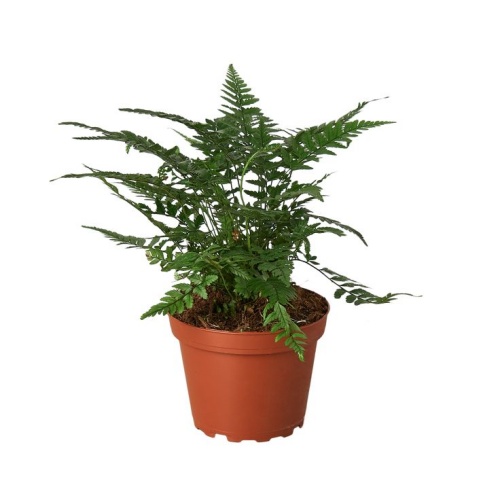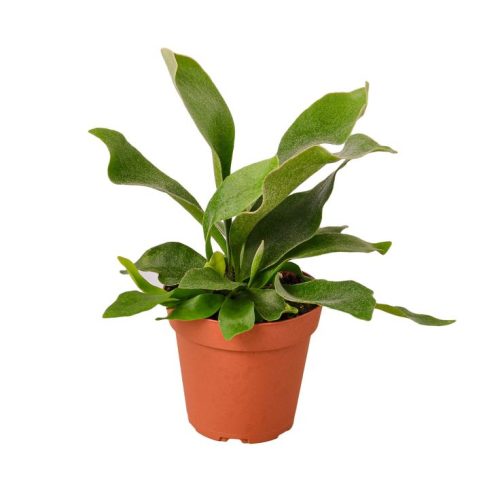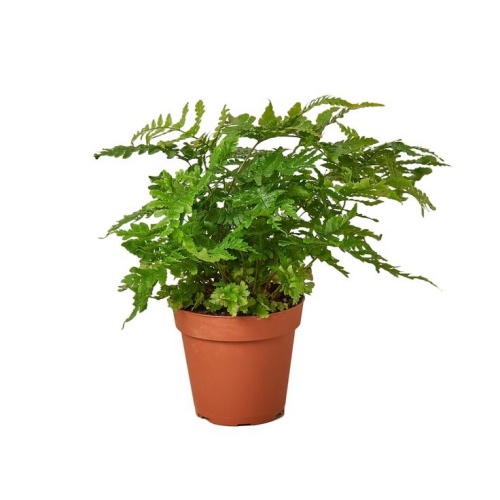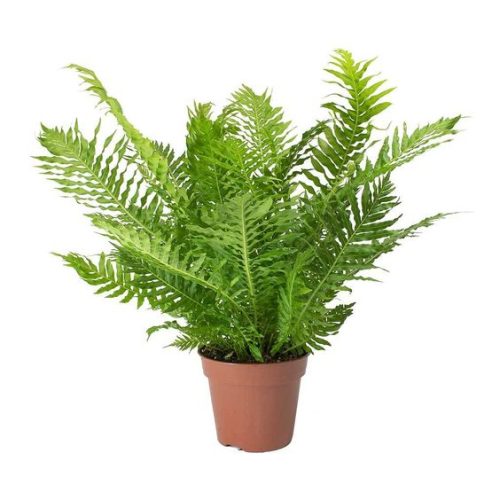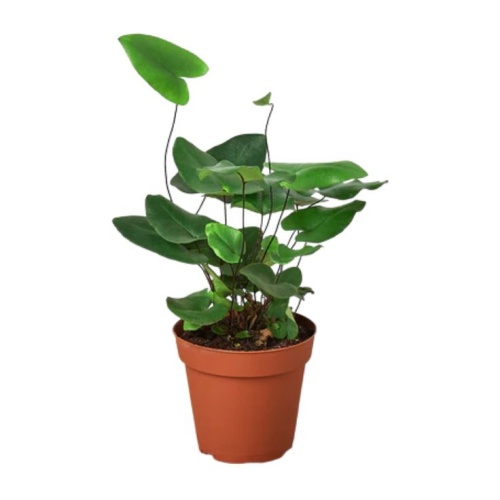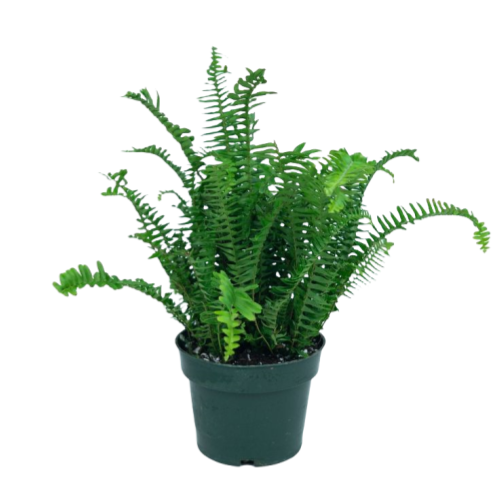Blue Star Fern
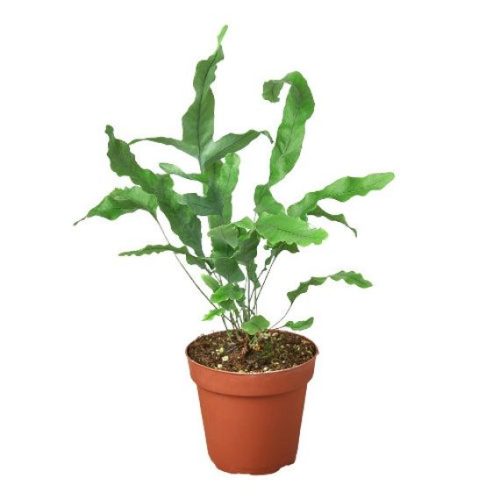
- Botanical Name: Phlebodium aureum
- Family Name: Polypodiaceae
- Stems: 1-3 Inches
- Temperature: 5℃-28℃
- Other: Shade tolerant, warmth, not cold resistant, prefers humidity
Overview
Product Description
Royal Fern Dominion: The Blue Star’s Sublime Habitat
Blue Star Fern Overview
The Blue Star Fern, scientifically known as part of the Polypodiaceae family and belonging to the genus Phlebodium, is distinguished by its unique leaf morphology. Its slender fronds are coated with a fine blue wax, giving them a silvery-gray texture. Native to the tropical forests of South America, this fern thrives in humid environments and is not drought-tolerant. It can adapt to low light conditions but grows best under bright, diffused light.
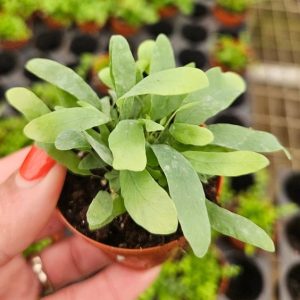
Blue Star Fern
Optimal Lighting Conditions
The Blue Star Fern prefers to be placed near east or south-facing windows, where it can enjoy the soft morning sunlight followed by bright, diffused light for the remainder of the day. Direct strong light, such as midday sun during summer, can scorch the fronds, leading to curling, scorching, and yellowing. Conversely, insufficient light can result in slow growth, legginess, and reduced new leaf size and vibrancy. As seasonal light conditions change, it’s important to adjust the plant’s location to avoid harsh direct sunlight in summer while ensuring it receives ample light during winter months. Regularly rotating the plant ensures even growth as it basks in the light.
Temperature Preferences
This fern enjoys warm climates and is not frost-tolerant. It grows well in environments maintained between 15-28 degrees Celsius. If temperatures drop too low, the plant may enter a dormant state, potentially leading to leaf drop. To preserve its optimal health and visual appeal, it is recommended to keep the Blue Star Fern indoors during winter. The temperature should not fall below 5 degrees Celsius, as prolonged exposure to cold can be detrimental to this tropical indoor plant. Indoor care during winter is essential, and the plant should be kept away from air conditioning or heating vents to prevent extreme temperature fluctuations.
Humidity and Watering
Originating from the damp rainforests of South America, the Blue Star Fern favors moist conditions and is prone to drying out. During spring and summer, the soil should be kept lightly moist, while in autumn and winter, it is sufficient to water once the topsoil is completely dry. It’s crucial to use well-draining, breathable pots and soil to prevent waterlogging, which can lead to root rot. When watering, always check the soil’s moisture level with your finger or a tool before hydrating; never water on a whim. Ensure that the pot you use has good drainage and breathability, as some pots or saucers may not have drainage holes. In the heat of summer, regular misting of the leaves can be beneficial. The plant should be situated in a well-ventilated environment, as ventilation significantly affects the evaporation rate of soil moisture.
Humidity
Ferns generally prefer high humidity environments, but the Blue Star Fern is not as demanding. Normal household and courtyard humidity levels are typically sufficient for its growth. If the ambient humidity is less than 40%, especially in the dry winter months, water the plant more frequently or mist around the leaves to compensate for the moisture deficit.
Tips for Enhancing Humidity
– Utilize a humidifier, taking care to mist around rather than directly on the leaves, lightly spraying the plant’s surroundings or above it.
– Group plants that prefer high humidity together to create a micro-humid zone.
– Create a DIY humidifier by placing a shallow tray with pebbles or another medium, filling it with water so that it covers half the medium, and placing the pot on top, ensuring the pot is not submerged in water. The natural evaporation will help maintain humidity.
Fertilization
The Blue Star Fern does not have a high demand for fertilizer. Moderate fertilization is sufficient. During the spring and summer growing seasons, apply a balanced, water-soluble fertilizer at half strength once a month. Fertilizing can be halted in winter when the plant’s growth slows down due to low temperatures, as fertilizing then could burn the roots.
Fertilization Tips
– If the plant is in the right environment and shows significant leaf growth, supplemental fertilizer can be beneficial.
– If you’ve used fresh soil with added base fertilizer, no additional fertilization is needed.
– Remember, more is not always better; over-fertilizing can harm the root system due to fertilizer buildup.
Ventilation
Poor ventilation in indoor plant care often leads to pests such as spider mites and scale insects. Good ventilation accelerates moisture evaporation. An experiment showed that a potted foliage plant takes about a week to completely dry out on a fully enclosed balcony, but only 2 to 3 days in a well-ventilated outdoor environment, highlighting the difference in soil drying times based on ventilation.
Ventilation Tips
– Without proper ventilation, moisture evaporates slowly, leading to overly wet soil for extended periods, which can cause pests and diseases, and even root rot.
– A small fan can aid in plant ventilation; be mindful not to place it in a direct draft from windows during winter.
– If you cannot guarantee sufficient ventilation, consider reducing watering and placing the plant in a brighter environment. Adjusting the potting mix and choosing more breathable pots can also help.





